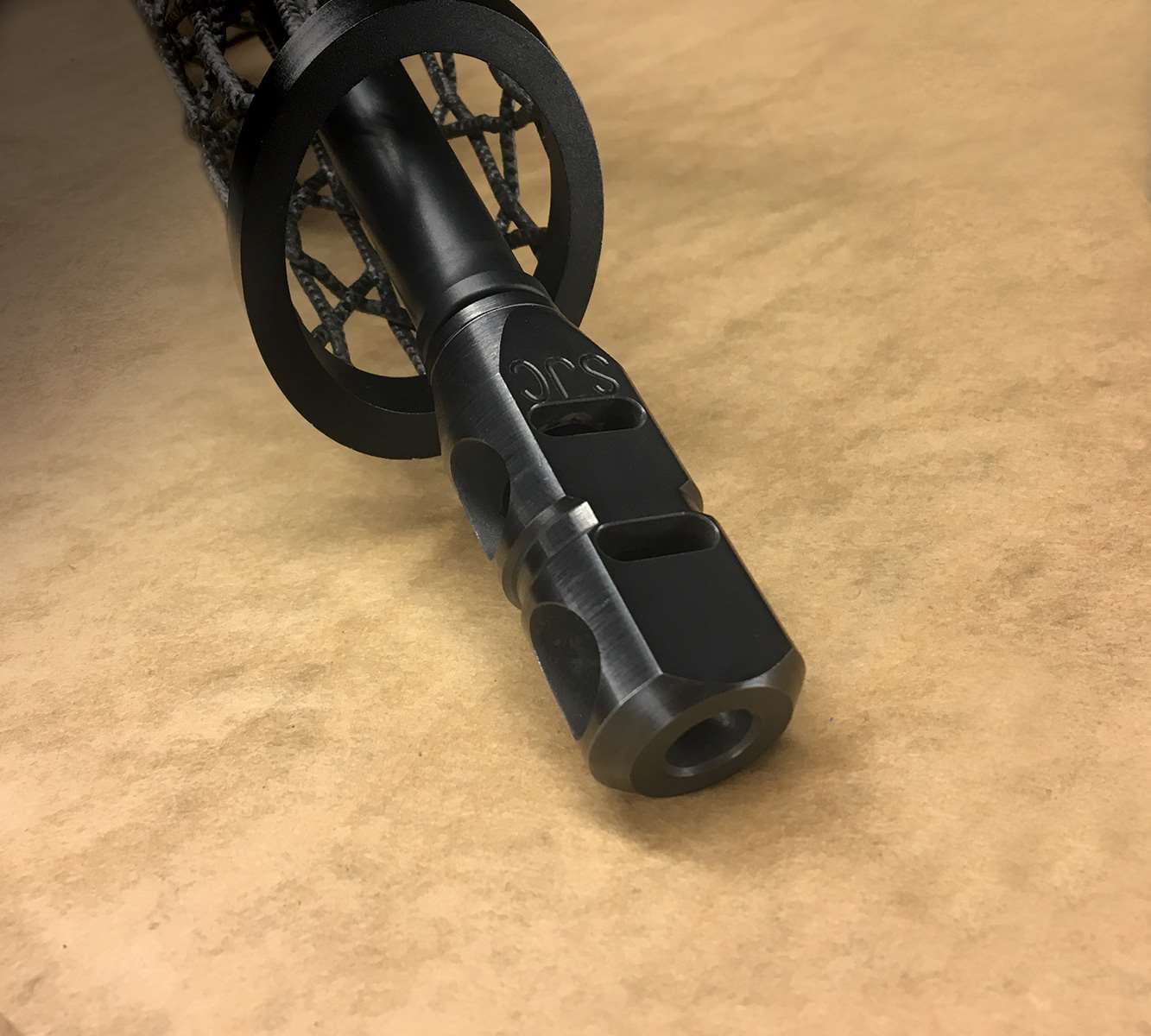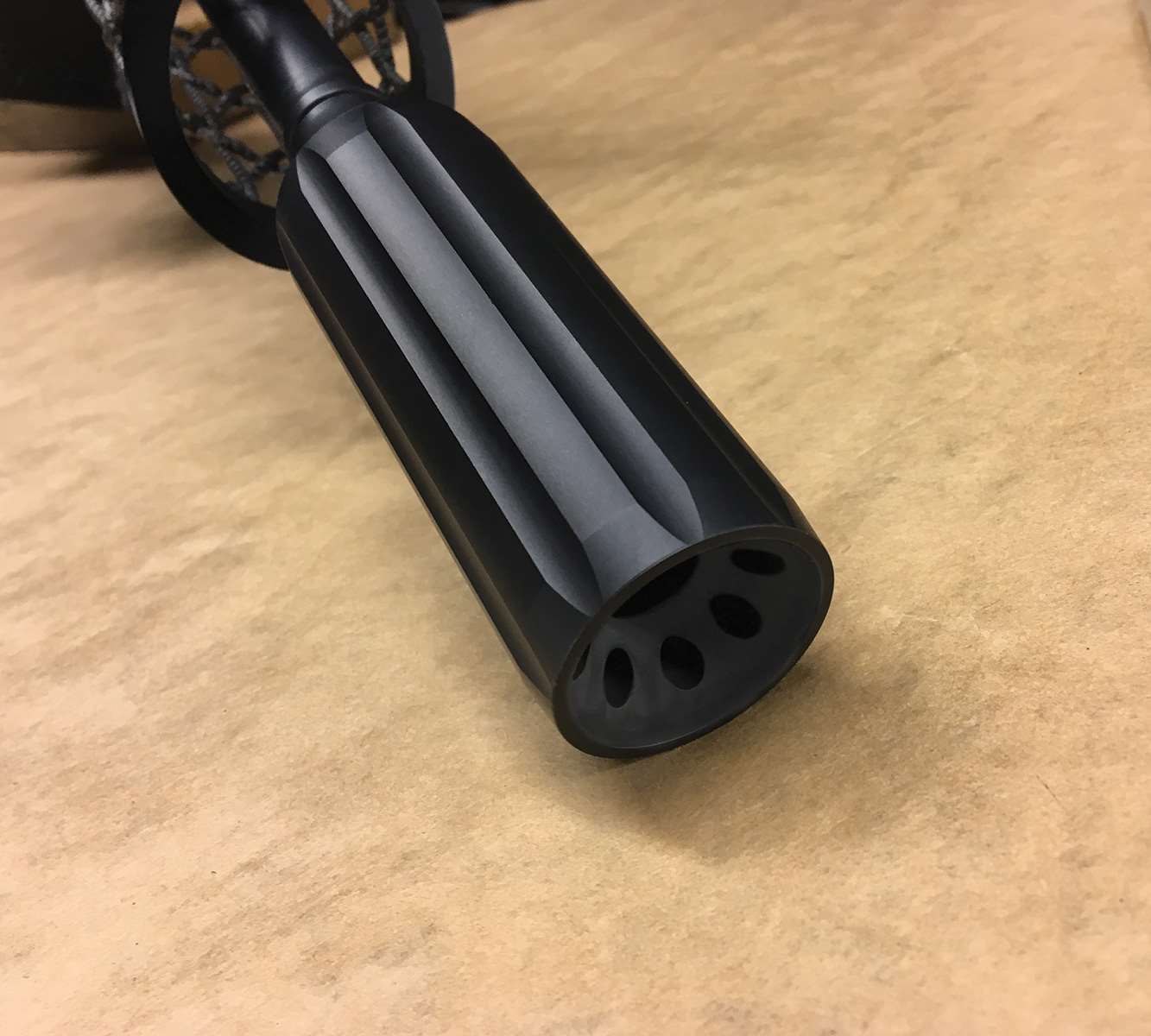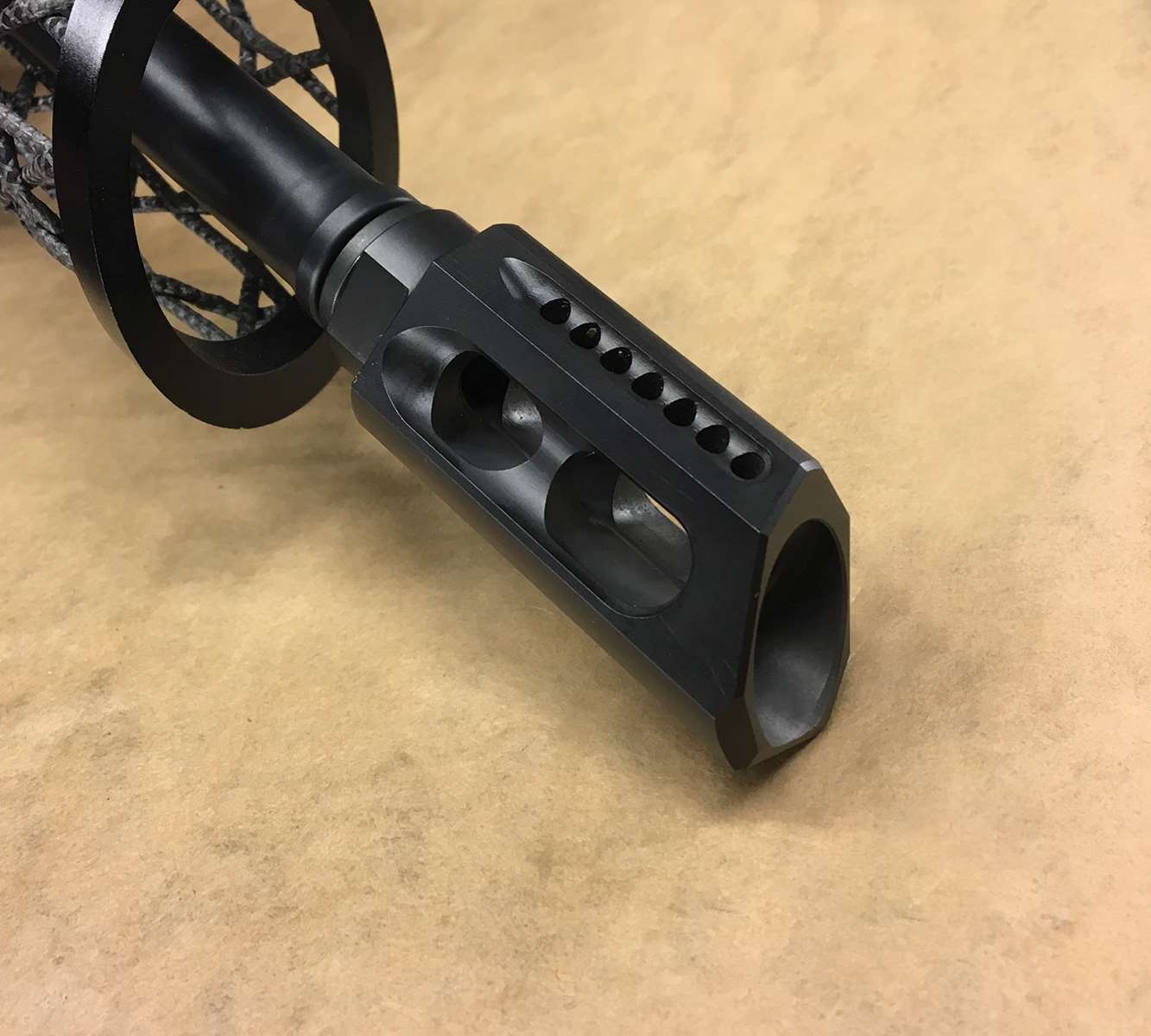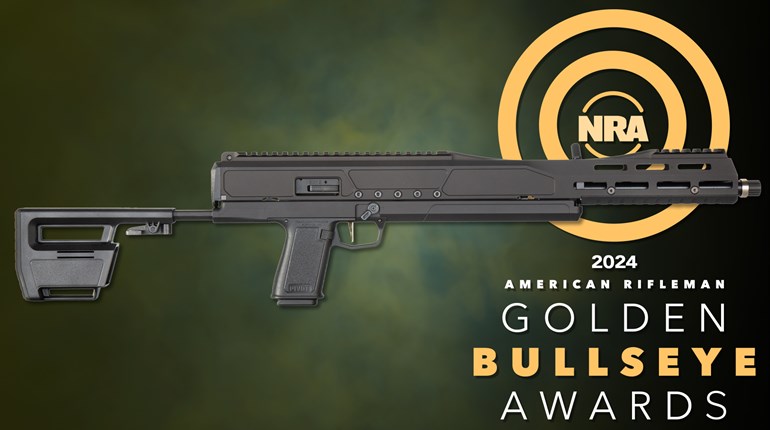
We get back to our pistol caliber carbine (PPC) build with a look at barrel termination, and a rare chance to do a little head-to-head comparison. Thanks to both good timing (supporting vendors), and good design (Mssrs. Stoner, Sullivan and Fremont), we’re able to spin three different compensators on and off with ease, and before we forget the sensations of how one performs vs. the others.
A little primer on comps (short for compensators) may be helpful in terms of understanding what we’re looking for. First is a terminology issue: You’ll frequently see “compensator” and “muzzle brake” used interchangeably. They are not, in point of fact, the same, but research and experimentation have merged their different functions into single devices.
Whatever the actual name, the mechanics—at least as applied to handguns, rifles or shotguns—are very similar. Using a series of ports and chambers, combustion gasses from behind the departing projectile are vectored in amounts and directions that reduce apparent muzzle/gun movement. We say “apparent” because many comps actually trade movement in one (presumably unhelpful) direction for movement in another (presumably helpful, or at least easier for the shooter to control). Make sense?
Lund/SJC
For shooters who’ve shot 3-gun, the SJC “Titan” needs no introduction. We took a preliminary look at their 9 mm version here, but their two-chamber model has now had a serious comparison with other contenders. It’s an impressive exemplar, venting upward through two elongated, elliptical ports (the comp function), and an additional two on either side (the muzzle brake function). Ours is the steel variant, now replaced by a titanium version.

One way in which the SJC is a real joy is ease of installation. Huge flats both top and bottom on the whole body make the wrenching surface a) easy to acquire, and b) easy to protect.
Those same 3-gunners may grimace a little considering the Titan, as it has a fierce reputation in the rifle world as a fabulous performer, but very loud and side-wise concussive. Take heart, though: There’s plenty of gas to work in 9 mm, but not enough to offend.
In terms of performance, we’d give it a “very good.” Many comps that come over to the PCC realm from a rifle predecessor are clearly better at higher operating pressures and the comparatively massive gas volumes that are available, and we think this hurts the Titan a little in comparatively dainty 9 mm. That said, our lighter, faster bullets that run over much bigger charges benefited from the Titan more than heavier, slower bullets.
If you’re a shooter who prefers the feel of very rapid cycling, you’re probably using lighter bullets anyway, and a Lund/SJC will suit your carbine very well.
Lund/SJC “Titan” is available at S&J Customs; $160.00, and available in three thread pitches: 1/2-28, 1/2-36, and 13.5 mm x 1 Left.
Kaw Valley Precision Linear “XL”
This is our “What The Heck Is That?!” award winner, and not without reason. We were asked constantly if it was a suppressor, even though the attachment “neck” and outer contour didn’t commend that to us. Oh well.

The Kaw Valley comp has a problem in our view, though not the bad sort; rather, of the marketing sort. We’re afraid its shape and simplicity will suggest gimmickry rather than function, and that would be a shame. In terms of moderating overall rifle function, this was our clear winner. By “moderating,” we mean something pretty specific, but for many shooters eminently practical: If you don’t reload, give the Kaw Valley a serious look.
The Kaw doesn’t give the most compensation or braking effect, but it does make the carbine feel more “the same” over wide variations of bullet weight and apparent power. Mainly, we think this is a function of the single gargantuan expansion chamber that allows it to work on a much larger percentage of whatever gas is available, independent of a faster powder or slow, light bullet or heavy, gassy or ungassy powder.
There are other subtle pluses as well, many relating to the axial symmetry. By this, we mean there is no “up” or “down” that affects function. In other words, it’s a no-brainer to install. The only reason to “time” the XL is to put the wrench flats in a particular position, but this is hardly necessary. The surface and diameter of the comp let us turn it on by hand, and it stayed tight through the whole test with ease.
The linear nature of the comp may also be a puzzler for some, but here’s our take on why it works despite pushing gas in what seems like the wrong direction. Mainly, it’s timing. By peeling gas into that big chamber and retarding expulsion—spreading it out in time—felt recoil goes down. This may also have a secondary benefit that applies especially well in blowback arms: Delayed release keeps the carbine more solidly on the shoulder for longer, and counteracts the higher bolt mass which can get the shooter—and his or her sights—bouncing.
We inadvertently discovered another characteristic we’d missed (though the Kaw Valley website notes it): The length of the comp actually adds a safety margin if you’re using it on a short-barreled build. When you get a little forward of your handguard—note we did not say “if”—your hand/fingers won’t get gassed by the Kaw Valley. Both its length and forward ejection of gases will help you keep out of this painful and possibly quite injurious fix.
This may also be the best choice if you see your PCC in a defensive, indoor role. It considerably quiets a carbine from the shooters perspective and pushes concussion effects away from you.
Don’t let the unusual appearance of the Kaw Valley put you off: This is a nifty comp with lots of attributes, and at a very reasonable cost.
JoeBob Outfitters provided our Kaw Valley sample. Linear “XL,” $44.95.
Yankee Hill Machine Slant Muzzle Brake
No stranger to our pages, we promise that our affection for the appearance of the YHM “Slant” (and especially with our Brigand Arms handguard) has nothing to do with our impressions. Frankly, it needs no such crutch.

We’ve used this in two calibers previously (.308/7.62x51 and .223/5.56x45), and expected it would suffer from the rifle-comp-bored-out-and-threaded-to-fit-a-PCC blues.
Er, nope. When we got down to our final three—yes, that means several did not make the grade—we brought in other testers. In rare unanimity, they agreed on the top three, as well as the top one (second and third places flip-flopped some).
We think it’s no surprise: The YHM uses more gas though smaller ports, but uses them sooner in “comp” mode to keep the muzzle flat, and repeats the rapid time coherence to retard rearward movement (rather than storing/spreading out in time) with side ports. The former characteristic gives more energetic down thrust to the muzzle, while the latter counters the rearward push of recoil.
That’s three for three in our books, Yankee Hill Machine. Well done.
Find Yankee Hill products at Brownell’s, and the Slant Break here; $59.00.
Frank Winn has been studying arms and their relationship to tyranny, meaningful liberty and personal security all his adult life. He has been a firearms safety/shooting instructor for more than 20 years, and earned state, regional and national titles in several competitive disciplines.

































